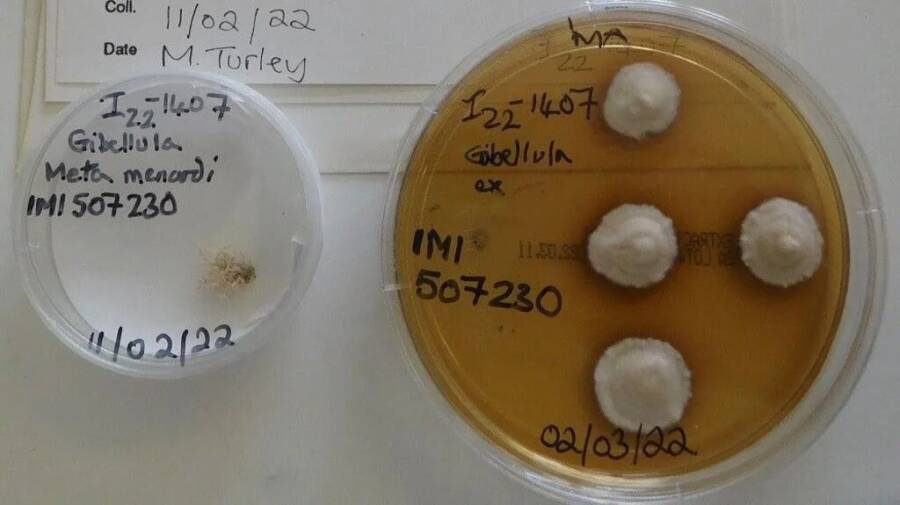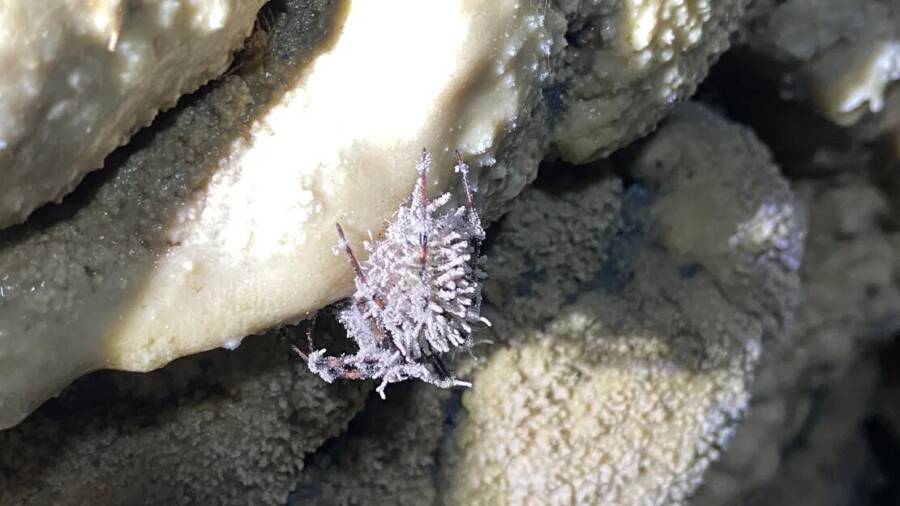“Unraveling Nature’s Dark Secret: Are Irish Spiders Turning Into Mind-Controlled Zombies?”
Named in honor of the naturalist and BBC broadcaster David Attenborough, G. attenboroughii appears to be a fungus species native to the island of Ireland that infects indigenous cave-dwelling spiders through the airborne transfer of spores. When a spore lands on a spider, it penetrates through its exoskeleton and multiplies once inside, taking over the entire arachnid.
After it has complete control, the fungus makes its victims perform actions they would not otherwise do. For example, the fungus compels the arachnids to leave their webs and walk out into the open before dying.

Center for Agriculture and Biosciences International Samples of the fungus that has been turning spiders into “zombies.”
Study co-author Dr. João Araújo, a mycologist at the Natural History Museum of Denmark, stated that this behavior is meant to take advantage of air currents that will further spread the fungal spores to infect new victims.
While this phenomenon may seem frightening, researchers note that this particular fungus species only infects arachnids, and it may even be beneficial for the ecosystem.
“Fungi have evolved many millions of years ago, more than 100 million years ago, and they have been coexisting with these spiders and other species of fungi and other insects,” Araújo told CNN. “Actually, we can hypothesize that they keep the forest in balance.”
Additionally, fungi like G. attenboroughii are already proving vital for our own health. The medical industry’s most promising answer to the rising antibiotic resistance crisis has been Ophiocordyceps, a fungus that rose to fame in popular culture for infecting ants and serving as inspiration for the video game and television show The Last of Us.












